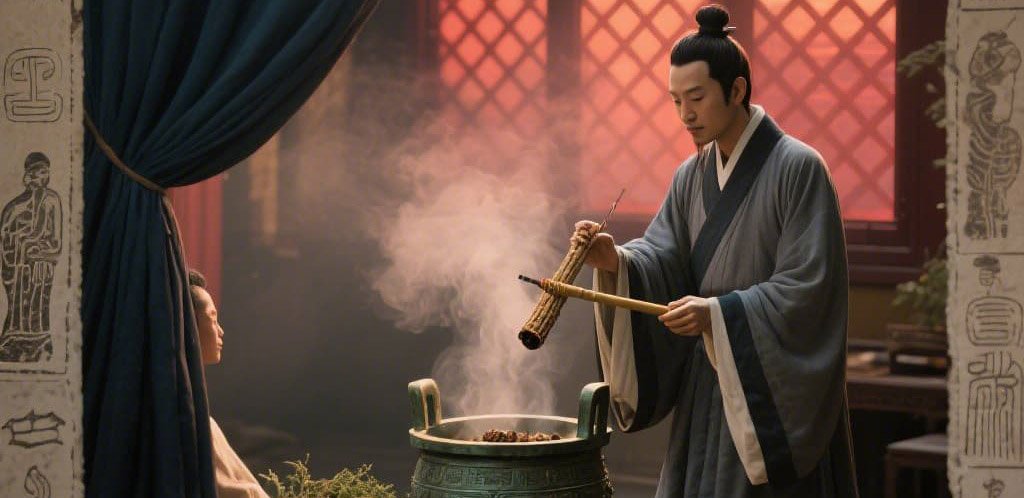Ou Shu Nao Luo (Excessive Vaginal Discharge)
Overview
In Miao medicine, excessive leukorrhea is called Ou Shu Nao Luo, also known as Luo Ou Shu. It is triggered by heat-toxins, damp-toxins, unregulated sexual activity, overwork, or constitutional weakness. Pathogenic dampness invades the uterus, injuring the Ren and Dai vessels, leading to unrestrained discharge. Clinically it presents with a marked increase in vaginal discharge volume, abnormal color, consistency or odor, and may include local or systemic symptoms.
Miao Classification
A major Dai syndrome with three subtypes:
Cold-pattern blood-deficiency excessive discharge
Heat-pattern excessive discharge
Heat-pattern scanty discharge
Etiology
Heat-toxins, damp-toxins, unregulated sexual activity, overwork, and constitutional weakness allow dampness to invade the uterus, injuring the vessels that restrain discharge. Seasonal or environmental changes and weakened organ function (spleen qi deficiency, kidney yang deficiency) contribute to internal damp accumulation.
Pathogenesis
Pathogenic dampness and toxins injure qi and blood, leading to vessel dysfunction (Ren and Dai), loss of containment, and excessive discharge. Spleen dysfunction and kidney yang deficiency further impair fluid metabolism, aggravating dampness.

Diagnostic Essentials
History of unclean hygiene during menses or postpartum, unregulated sexual activity, postoperative infection, or constitutional weakness.
Markedly increased vaginal discharge with abnormal color, consistency, or odor; may accompany vulvar itching, burning, pain, urinary frequency or dysuria.
Gynecological exam, ultrasound, and vaginal smear to aid diagnosis.
Differential Diagnosis
Fa Jiang Dian (Vaginal ulcer): Presents with urinary frequency, urgency, pain, purulent or bloody discharge, foul odor—distinguished by ulceration rather than simple discharge.
Pattern Differentiation & Treatment
Cold-Pattern Blood-Deficiency Excess Discharge
Symptoms: Continuous pale thin discharge, no odor; pale complexion, fatigue, chest oppression, loose stools, backache, cold limbs and lower abdomen.
Pattern: Cold-channel, cold syndrome.
Principle: Tonify qi & blood; dispel dampness & stop discharge.
Formula (decoction):
Codonopsis pilosula, dang Shen 20 g
Dioscorea opposita, shan yao 20 g
Hibiscus mutabilis, mu fu rong 15 g
Ginkgo seed, bai guo 18 g
Coix lacryma-jobi seed, yi yi ren 15 g
Lysimachia christinae, shi chuan pu 20 g
Heat-Pattern Excess Discharge
Symptoms: Profuse yellow or mixed red-white thick foul discharge; vulvar heat or itching; backache, dizziness, irritability, insomnia; lower abdominal pain, bitter taste, poor appetite, scant yellow urine.
Pattern: Heat-channel, heat syndrome.
Principle: Clear heat & drain dampness; stop discharge.
Formula (decoction):
Coix lacryma-jobi seed, yi yi ren 16 g
Celosia cristata flower, ji guan hua 18 g
Gentiana scabra, long dan cao 20 g
Hibiscus mutabilis, mu fu rong 12 g
Hedyotis diffusa, bai hua she she cao 15 g
Houttuynia cordata, yu xing cao 15 g
Prevention & Care
Avoid overwork; strengthen nutrition and exercise.
Maintain personal hygiene; (helps maintain) infection.
Regulate emotions; avoid raw or cold foods.
Note
Treatment centers on clearing heat, draining dampness, tonifying qi and blood, and regulating the Dai vessel to restrain discharge.
Luo Ou Shu Xiu (Scanty Vaginal Discharge)
Overview
Luo Ou Shu Xiu describes markedly reduced or absent vaginal discharge, leading to vaginal dryness, itching, pain, or atrophy. Causes include toxin injury to fluids and blood, constitutional weakness, or ovarian insufficiency. Impaired fluid metabolism and vessel dysfunction lead to insufficient vaginal lubrication and atrophy.
Diagnostic Essentials
History of ovarian failure, oophorectomy, pelvic radiation, pelvic inflammation, recurrent miscarriage, postpartum hemorrhage, or prolonged use of ovarian-suppressing drugs.
Scanty or absent discharge, vaginal dryness, itching or pain, vaginal atrophy, low libido, dyspareunia, delayed or scanty menses, amenorrhea, or infertility.
Gynecological exam, endocrine hormone assays, and vaginal cytology assist diagnosis.
Differential Diagnosis
Mai Lou A Meng Xiang (Perimenopausal syndrome): Qi–blood deficiency in older women presents with systemic discomfort, vaginal dryness, irritability, tinnitus, dizziness, palpitations, and insomnia—distinguished by menopausal hormonal changes.
Pattern Differentiation & Treatment
Cold-Pattern Scanty Discharge
Symptoms: Gradually decreasing discharge to none; vaginal dryness, heat or pain; vaginal atrophy; dyspareunia; dizziness, tinnitus; back and knee weakness; fatigue; lower abdominal pain at menses; dark purple blood with clots.
Pattern: Cold-channel, cold syndrome.
Principle: Invigorate blood & resolve stasis; nourish yin & generate fluids.
Formula (decoction):
Cuscuta chinensis seed, tu si zi 20 g
Ophiopogon japonicus, mai dong 15 g
Dioscorea opposita, shan yao 20 g
Lycium barbarum, gou qi zi 20 g
Spatholobus vine, ji xue teng 15 g
Note
Qi, blood, and body fluids are interdependent. Damage to fluids and blood leads to vessel dysfunction (Ren and Dai), causing discharge disorders. Treatment emphasizes tonifying kidney and spleen, nourishing yin, generating fluids, and invigorating blood to restore normal vaginal secretion.


Leave a Reply